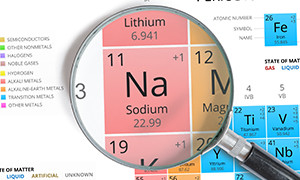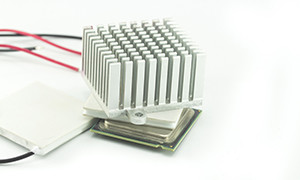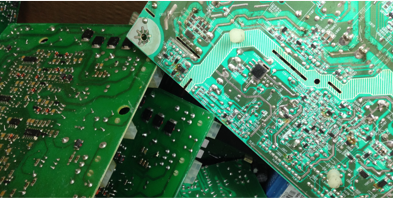There are more than 5,000 scientific papers and patents on tin related technologies published every year demonstrating a strong future for this versatile element.
Energy uses and technologies are the strongest new use drivers, with tin additions to lead-acid batteries and solder used for joining solar cells already benefiting. Over the next decade tin has many opportunities in lithium ion and other batteries, solar PV, thermoelectric materials, hydrogen-related applications and carbon capture. R&D, startups and corporate investments related to these innovations will be highlighted.
Watch ITA video: ‘Tin for Tomorrow’ (2 mins)
LATEST NEWS
- Tin anodes for sodium-ion batteries may be a game changer 27 Jun 2024
- Tin-based device could enable quantum internet 15 Feb 2024
- Fourth Power receives $19 million investment into its molten tin thermal energy storage technology 15 Dec 2023
- Tin a target for Audi Environmental Foundation in new recycling research 18 Jul 2023
- Solar power emerging as a major tin use 24 Nov 2022
- Startup Nanode demonstrates low-cost tin foil anodes for lithium-ion batteries 26 Jan 2022

Georgia Laurie
Technologist
Georgia is responsible for identifying new tin technologies and their potential impact on tin supply and demand.
Tin for the Future
Presentation on the future of tin given by Dr Jeremy Pearce at the London Tin Seminar 2020.
The imminent 4th Industrial Revolution and the Green Industrial Revolution should both benefit tin over the next decade. Tin as solder will glue together all of the electronic and electrical equipment required for a 5G-supported smart communications future. At the same time the fascinating technical properties of tin are already delivering a wide and growing range of R&D projects across green energy technologies as well as new electronic materials. Tin-copper products should also benefit from development of electric vehicles and renewable energy infrastructures.
Tin in Green Technologies
Dr Jeremy Pearce presents a review of tin green technology R&D at December 2020.
Tin has a wide range of fascinating technical properties and this enables it to compete across the board in the Green Industrial Revolution. A portfolio of case studies is presented, based on ITA’s curation of around 5,000 scientific abstracts on tin R&D each year. Latest research results are highlighted, including technologies for tin usage in energy storage, energy generation and a greener planet.

Lithium Ion Batteries
Tin may be the ‘forgotten eV metal’. As other commodities gain public attention tin is quietly gaining momentum as a performance enhancing component in all of the three generations of advanced anode materials that have been roadmapped to 2030, plus some solid state technologies. Several hundred papers and patents have tracked development of tin-based materials to maximum theoretical capacity and even beyond. Although the field is highly competitive, startups and major OEMs are starting to signal their interest in tin and International Tin is monitoring developments with keen interest.

Post Lithium Ion Batteries
Whilst the current focus is on lithium ion batteries the next generation of cheaper, safer products is already in development, including sodium ion, magnesium ion, potassium ion and other products. Tin, its alloys and compounds are prominent candidates for anode materials in some of these, and a growing number of developments including tin are noted. Although performance of some prototypes already exceeds commercial lithium ion products, it is likely that such products will find their own market space and indeed some are already being used in niche markets.

Other Battery Technologies
A number of other battery technologies are under development, particularly for larger scale utility power storage. For tin there may be opportunities in liquid metal technologies or as a catalyst in redox flow batteries for example. Some very recent work on ion-exchanging technologies includes tin as a possible metal ion candidate.

Solar Technologies
Tin was early in the race for new ‘earth abundant’ materials to replace expensive and rare elements used in current solar PV technologies such as gallium. The first generation product was a ‘kesterite’ copper tin zinc sulphide (CZTS) developed by IBM. More recently tin has gained attention in ‘lead-free’ perovskite products that have dramatically competitive performance, targeted at new markets for example on architectural glass. Tin is also being explored as a heat energy storage medium on solar farms that concentrate sunlight using mirrors. Thermal technologies such as solar water heaters are likely to become more important. Apart from the materials themselves, this sector is already benefitting tin use in China particularly through increased use of solder ribbon used to join solar cells, and increased associated electronics production.

Thermoelectric Materials
Tin is often part of complex multi-component materials developed to convert heat energy, especially waste heat, into useful electricity, known as thermoelectric materials. Indeed tin selenide has been hailed as ‘the worlds best’ thermoelectric material due to its unique crystal structure. A large number of materials are under development for different temperature ranges and environments including simple products such as zinc tin oxides or tin sulphides as well as more sophisticated products such as ‘Huesler’ alloys such as nickel manganese tin.

Hydrogen Generation
The hydrogen economy is still largely in the future as a concept, but there are already some uses and an increasing investment in visionary projects such as the hydrogen aeroplane. Tin has already been shown to have potential to significantly reduce the costs and sustainability of hydrogen production technologies, notably in use as a liquid metal to strip carbon from methane and as an oxide or sulphide photocatalyst to split water in sunlight.

Fuel Cells
Fuel cells are used to combine hydrogen and oxygen over a catalyst to produce electricity and tin has been shown to make an important contribution to some key components in the technology. Liquid tin was first used as an electrode in a type of fuel cell that was able to convert any type of hydrocarbon gas feed and at the same time act as catalyst the recombinant reaction. Other developments have used tin, its alloys and compounds in various physical parts of the fuel cell, including tin pyrophosphate as a medium temperature fuel cell membrane.

Carbon Capture Catalysts
The race is on to find and develop catalysts that can convert climate change gases, notably carbon dioxide, to useful industrial chemicals such as formate. Although there are numerous candidates, tin has a special ability to reform and join organic compounds that can be exploited, using sunlight or electrochemistry. An increasing number of studies are using tin as the active component, or as a promotor in other catalyst systems.

Water Treatment
Tin oxide nanotechnology is particularly fascinating in regard to water treatment technologies. Tin can chemically interact with and neutralise various contaminants, especially in its most active ‘stannous’ form. Using energy from sunlight and/or doping with other metals or compounds makes the stannous ions even more active. At the same time, tin oxide nanomaterials are very good adsorbents for water contaminants, used for example as an ‘ion exchange’ agent for radioactive elements. There is a significant amount of R&D being published regularly highlighting the many ways tin can be used to recycle wastewater and clean up water supplies.

Tin Recovery
Recovering tin from processes and products is key to reducing environmental impact and moving towards a circular economy. Tin recovery processes are diverse, and depend on the product from which tin is being recovered and the desired end product. In the past, tin recovery from waste has been overlooked due to the metal making up a very small proportion of consumer waste. As legislative and consumer pressure increases, tin recovery from electronic and other waste is becoming both more innovative and economically viable.

